ATV and UTV batteries are considered consumables that go bad over time due to sulfation, bad cells, poor maintenance, or simply old age. Before you go ahead and buy a new battery, it’s a good idea to test the condition of the one you have. That way, you know you are not wasting your money when other issues may be the real cause of your poorly performing battery.
No single test will troubleshoot all of the potential problems a battery can have. But by going through the steps in this little guide, you will cover most aspects that may be causing issues.
These are the tools you will need:
Caution: For all of the testing in this post, we recommend that you use safety glasses and gloves.
Page Contents
You may just have found that your ATV does not want to start, and you suspect that it’s caused by a dead battery. Keep in mind that there is a range of other reasons why your ATV seems completely dead or will not start.
Before spending too much time testing the battery, we recommend you make sure there are no simple solutions like forgetting to turn off the kill switch, not having the gear shifter in “park” or keeping the brake lever activated. Such mechanical safety features that may prevent your ATV from starting vary from model to model. Here is a complete guide for when an ATV won’t start.
Before you begin testing, it’s a good idea to inspect the battery visually. You may need to remove the battery from the ATV for a proper inspection.
If you notice any of the following defects, there is a good chance your battery is bad beyond repair. Replace it with a new one, no further testing is necessary.
A visible bulge may be a sign of overcharging. Smart chargers shut off automatically when a battery is fully charged.
Manual chargers, on the other hand, need to be monitored and turned off manually as soon as the battery reaches a full charge, or you face a risk of overcharging the battery.
The terminals should feel solid and not move even slightly. A loose terminal may create a potentially dangerous short circuit.
When a loose terminal short circuits, the battery will discharge all of its power immediately. Such a rapid discharge creates a lot of heat that can melt the plastic or make it catch on fire. A direct short like this can sometimes even cause the battery to explode.
Battery casings are tough but may crack open from impacts, mishandling, or if the battery has frozen. A cracked battery may still work fine but should be replaced never the less due to safety reasons.
Battery fluid should not leak off the battery. If it does, the battery should be replaced.
If it does, the battery should be replaced.
If the color of the electrolyte fluid inside one or more of the cells has turned brown or dark, your battery is most likely bad. It does not matter if the other cells look healthy; if one cell is dark, the entire battery is rendered useless.
Inside a conventional lead battery, there is electrolyte fluid that should reach up to a level where it fully covers the top of the lead plates or within a specified max/min level found in each cell.
Carefully remove the filler caps and inspect using a flashlight. If electrolyte levels are low, top of with distilled water until you reach the correct level. Never try charging a dry battery as it may cause it to burn up.
If the battery has been sitting dry or with a low electrolyte level for too long, chances are it has sulfated beyond repair.
By fully charging a battery and then measuring its open-circuit voltage, you can tell quite a few things about its overall health.
If you are not sure how to properly charge your type of battery, I advise you to follow the steps in this guide.
After charging the battery to a full charge, and with the charger disconnected, allow the battery to “rest” for a minimum of 12 hours.
This is necessary for the battery voltage to stabilize after the charging process, or you may get a false reading. Often there is a surface charge still present some time after disconnecting the charger.
If you don’t have time to wait as long as 12 hours, you could also turn the lights (high beams) on for two minuts to remove the surface charge.
Use a multimeter or volt-meter to read the battery’s voltage under no load.
| Open-circuit voltage reading | What it tells you |
| 0V | THe battery is not able to hold a charge. The battery likely has an internal short circuit and needs replacing. |
| Less than 10,5V | One or more dead cells. |
| Less than 11,8V | The battery is heavily sulfated beyond repair, and is not able to hold a suficcient charge.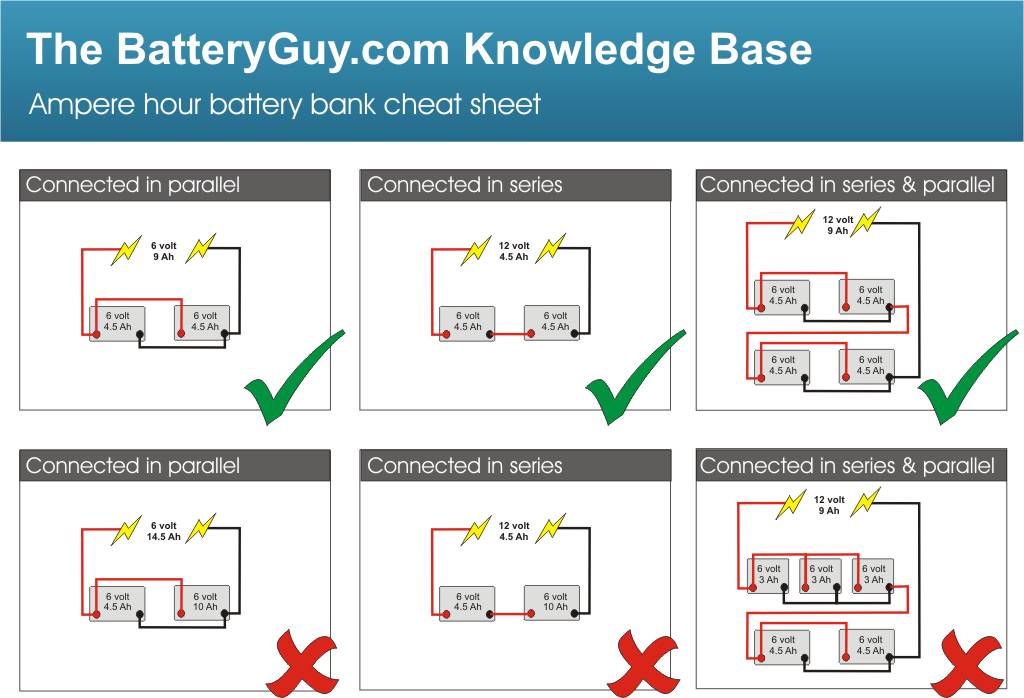 |
| Between 11,8V and 12,4V (12,4V equals about 75% state of charge) | The battery is sulfated to a level where it may no longer be fully recoverable. |
| 12.4V or more | The battery his able to hold a suficcient charge. You can expect a high level of recovery by performing a desulfation charge. |
An open circuit voltage reading, as described above, is helpful but does not always paint the full picture. The battery may still be bad even if you get a reading of 12.4V or higher.
Sometimes, you will find that the voltage drops fast as soon as you draw power from the battery. If so, the battery is likely bad and needs to be replaced.
To test if the battery can drive a load, you can perform a so-called load test. The goal of this test is to make sure that the battery voltage does not drop too low when drawing a high load.
A healthy ATV or UTV battery rated at around 200-400CCA should be able to maintain a voltage of 9,6V or more even under load (at 70°F (21.1°C)). A 400CCA battery should not drop below 10V.
You will need a multimeter. Preferably one that has a max/min function. If you use a multimeter without a max min, you may get a false reading, as the display refresh rate cannot keep up to show the actual minimum voltage reading.
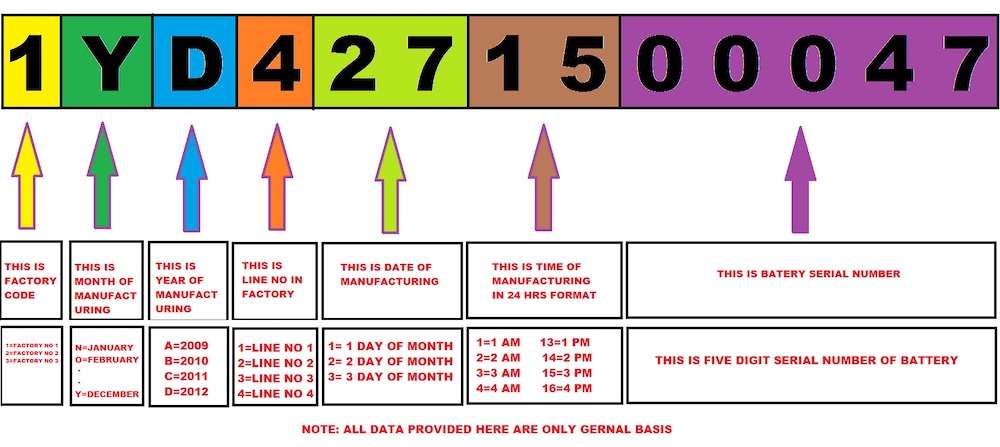 It’s OK if the ATV starts.
It’s OK if the ATV starts.A variety of consumer-grade batty testing tools are available in the $20 to 50 price range, where the two major types are digital and analog testing tools. Each tool has a specific user manual that needs to be followed, but I will outline how they work on a general level below.
An analog testing tool uses a built-in resistance element/heat coil to simulate a high load. The tool measures the voltage drop under load, indicating if the battery is good, weak, or bad, relative to its CCA-rating*.
The tool measures the voltage drop under load, indicating if the battery is good, weak, or bad, relative to its CCA-rating*.
* CCA is the amount of current the battery can put out at -18°C (0°F) for 30 seconds while maintaining a cut-off voltage of at least 7,2V. You should find the battery’s CCA rating on the battery label. Each battery comes with a specific CCA rating. The actual CCA capacity decreases as the battery gets older or damaged.
If the voltage recovers to its full potentil an only a couple of seconds after releasing the load switch, you know that the battery is bad. However, if the voltage recovers slow, yor battery is likely just run down and needs a proper charge.
The scale on a typical analof battery load tester.
Please refer yor the user manual of your testing tool for test directions specific to your tool.
Digital consumer-grade battery analyzers are inexpensive, compatible with most battery types, and can offer a range of test features such as:
To load test the battery you need to set the tool to its CCA-mode. You will need to insert the battery’s CCA rating before you begin the test. You should find the rating stamped on the battery casing, or by looking up the battery model number online.
Head over to this post to learn more about what ATV battery numbers mean.
The test will indicate how many CCA the battery is capable of.
This AGM ATV battery gets a CCA reading well over it’s rated capacity of 320CCA, and should be in good health.
Based on the measured CCA, the test tool may also provide you with a useful capacity reading or state-of-health reading in %:
| State Of Health (SOH) in % | Battery status |
| 0% to 40% | The battery is damaged or too old for normal operation and should be replaced. |
| 40% to 60% | The battery is getting old or getting weak. Consider replacing it. |
| 60% to 80% | The battery is in normal working order. |
| 80% to 100% | The battery is in good to excellent working order. |
A digital test tool may also be able to test the battery’s internal resistance. Resistance is measured in milliohms (mΩ) and tells you how much restriction the electrons encounter as they travel through the internals of the battery. A lower value indicates less restriction.
This AGM ATV battery has an internal resistance of 6.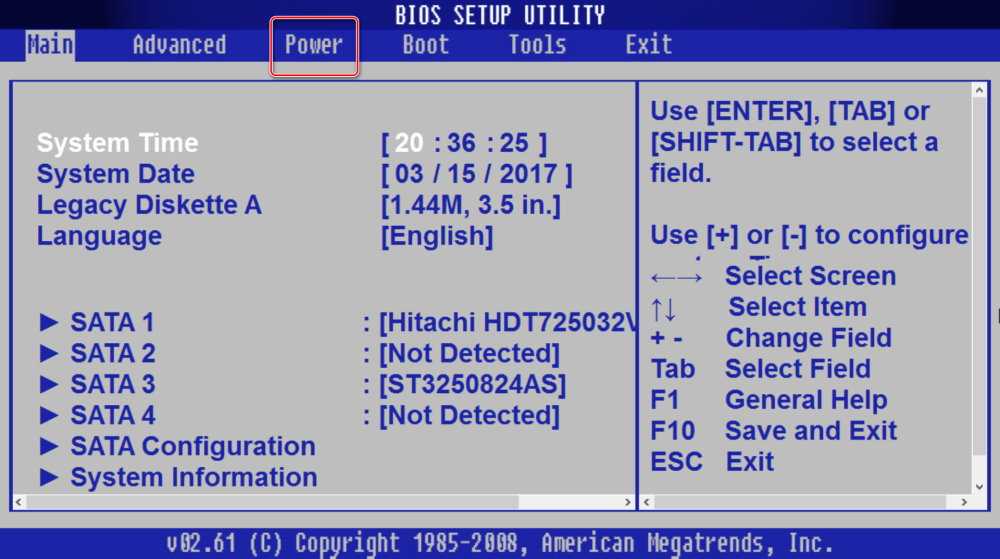 04 milliohms (mΩ).
04 milliohms (mΩ).The internal resistance of a modern ATV battery stays relatively flat throughout its service life and then increases as the battery starts to go bad. A high resistance reading indicates that the battery is getting close to the end of its life-span.
The internal resistance can vary as much as 5-10% from one batch of batteries to another. For the most accurate results, you need to measure the resistance of your specific battery when it is brand new as a reference for later testing.
A few years down the line, when you teat again and get a significantly higher reading, you know that the battery doesn’t have much time left.
Both Method 1 and 2 give you a relatively good indication of your battery’s health, but the accuracy of consumer-grade test tools are not always the best.
To get the most reliable results, you should have it tested with a professional load testing tool. A proper load test should draw a load that is half of the batteries rated cold-cranking amps for 10 seconds.
A proper load test should draw a load that is half of the batteries rated cold-cranking amps for 10 seconds.
Most Battery suppliers have one and usually don’t charge to do a test. Disconnect the battery and bring it fully charged to be tested.
Several of the tests in this post are designed to indicate your battery’s level of sulfation. But what is sulfation, and why does it matter when testing an ATV or UTV battery?
Over-sulfation is the most common cause of premature battery failure. An undamaged battery with low levels of sulfation is healthy, while it gradually loses its capacity as levels of sulfation increase.
Therefore it can be helpful to have a general idea of what sulfation is and what it does to your battery:

 ”
”ATV batteries are considered consumables that eventually go bad and must be replaced. But how do you know whether a battery has gone bad or it just needs a charge?
Here are the most common symptoms that could indicate that your ATV battery is beginning or has already gone bad.
The battery’s primary purpose is to power the electrical starter that, in turn, starts the engine.
When the battery becomes weaker, you notice that the engine cranks slower until there isn’t enough power to start the engine.
While slow engine cranking can be an early sign of a battery going bad, it can also just be that the battery’s state of charge is too low, and it needs a proper charge with an external charger.
ATV batteries are prone to draining faster than the ATV charging system can keep up. Battery draining can happen due to overusing power-hungry accessories such as an electric winch or when an electrical issue causes a parasitic amperage draw that drains the battery overnight.
Related: 10 Reasons Why Your ATV Battery Keeps Draining (Going Dead)
Note that it is normal if the engine cranks slower in cold weather. The engine is harder to turn due to the engine oil becoming thicker, and the cold also reduces the battery capacity, even in healthy batteries.
Another early sign that could indicate that the battery is starting to go bad is when the battery warning light turns on in the ATV instrument panel.
Modern ATVs typically don’t have a dedicated battery warning light but a check engine light combined with a diagnostic code that tells you the type of issue.
A battery warning light or check engine light with a “system power” diagnostic code tells you that the system voltage is too high or too low. Several issues could trigger this type of warning.
The easiest way to troubleshoot a battery warning light is to charge it with an external charger to see if it charges and test if it holds a charge.
Often, you’ll find that a proper charge with an external charger will bring the battery back to working order. But if the battery has gone bad, it may no longer be capable of taking a full charge.
A modern automatic charger usually refuses to charge a bad battery. When a battery becomes heavily sulfated or if a cell is dead, the charger notices in the initial stages of the charging process and won’t attempt to charge the battery.
If you use a conventional manual charger, the battery may seem to charge as usual, but when you test the voltage afterward, you find that it did not charge as it should.
Use a multimeter in the 20V DC setting or a volt-meter to read the battery voltage. The red lead connects to the volt (V) port and onto the positive battery terminal. The black lead connects to the COM port and goes to the negative battery terminal.
Some modern chargers have a “Recondition” mode that is designed to remove some of the sulfation. This feature can be useful to restore a battery in the beginning stages of sulfation.
Note that some smart chargers refuse to charge an otherwise healthy battery that’s been drained overnight.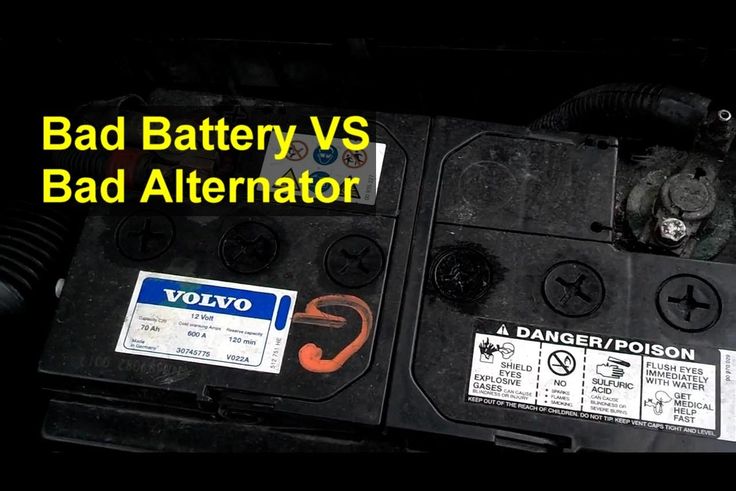 A completely drained battery has not necessarily gone bad as long as you make sure to charge it immediately.
A completely drained battery has not necessarily gone bad as long as you make sure to charge it immediately.
Here is a cool trick to try when your smart charger refuses to charge a drained battery.
Check out this guide to troubleshoot a scenario when a battery won’t charge.
Often, you will find that a battery you suspect has gone bad seems to charge as normal but loses its charge after just a day or two. A bad battery can lose its charge even when disconnected from the ATV.
When a battery has finished charging, it holds a higher but temporary surface charge that goes away after a couple of hours. When you read the voltage, it may indicate a healthy level above 12.4V. But after a day or two just sitting on the bench, a rapid self-discharge rate may have caused the voltage to drop well below your previous reading.
Battery not holding a charge can happen when fluid levels are low on a serviceable battery (conventional lead-acid battery with removable caps).
When a sealed battery no longer holds a charge, it has likely gone beyond repair and needs replacement.
Overcharging is when a battery is charged at too high of a voltage and can cause permanent damage to the battery. Typical signs of overcharging are when the batter loses its capacity, and the outer casing looks bloated with bulging sidewalls.
Bulging battery sidewalls are a sure sign it needs replacing, but you also need to find the source of the overcharging condition.
Using the wrong charger or wrong charge mode for the battery type can cause overcharge, but so can a defective voltage regulator.
The battery’s outer casing is made from a rugged, impact-resistant plastic material that can handle most of the abuse rough ATV riding can throw at it.
But from time to time, the outer casing may crack, spilling out the internal fluid, which has an immediate negative effect on battery performance.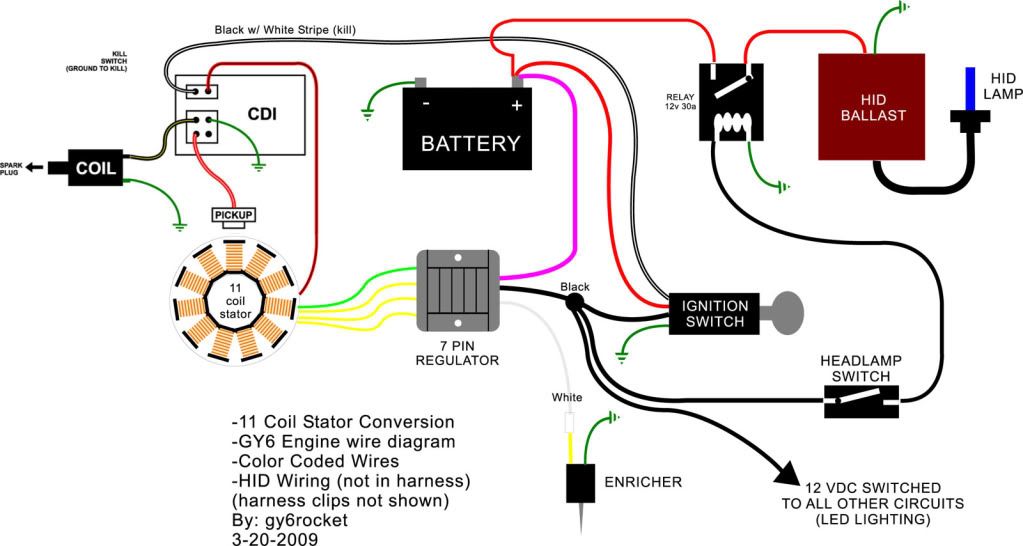
Inspect the battery to look for physical damage. You may need to disconnect and remove the battery for a good view.
With any signs of leaked battery fluids or cracks in the battery casing, you must replace the battery before using the ATV. If the leak is small, you may not find liquid battery acid but look for white residue in the battery tray from dried battery fluid.
A battery casing can melt and become misshaped if exposed to too high temperatures. That is why it needs to be installed at a safe distance from the exhaust system.
If the casing has defects near the battery terminal, it can be caused by a short and should qualify for a battery replacement.
The battery terminals should not show movement when you (gently) wiggle the wires.
While not very common, battery terminals may come loose from hard impacts or fatigue when a battery loose battery moves around in the battery compartment or tray.
Loose or damaged battery terminals are dangerous and can cause a short circuit, which can cause the battery to explode.
On a conventional serviceable lead-acid battery with removable battery caps, you can inspect the condition of the battery fluid.
Caution: Always wear eye protection when working on a battery.
If the fluid levels are low, you should top off with distilled water so that the level is between the max and min mark before charging.
The battery acid should be clear and colorless. A dark or brownish fluid in one or more cells indicates a bad battery and renders the battery useless.
While some ATV batteries go bad from overcharging, physical damage, high temperatures, or short circuits, the number one cause is an internal chemical process known as sulfation.
When a battery discharges, the chemical reaction that happens inside the battery creates a by-product known as sulfate (salts of sulfuric acid). The build-up of sulfate salts on the lead plates is called battery sulfation.
The build-up of sulfate salts on the lead plates is called battery sulfation.
Charging the battery naturally reverses the sulfation process by turning most sulfate salts or crystals back into electrolytes (battery acid).
But some sulfate salt crystals remain on the lead plates, and as the battery ages, they begin to build up.
The battery gradually loses some of its capacity (its potential to reach a full charge) as the sulfate crystals increase in size and harden on the lead plates. The sulfation also increases the battery rate of self-discharge.
Sulfation can be kept at a minimum by ensuring the battery stays at full charge most of the time.
The sulfation process accelerates when a battery sits at a drained or low state of charge for extended periods, such as through winter storage.
That is why your best hedge against a bad battery is to leave it on a maintenance charge throughout winter storage and to top it off now and then through the riding season.
Related: How Long Do ATV Batteries Last in Real-World Conditions?
When a battery has become sulfated to a point where it can no longer hold a charge, your only option is to get a replacement battery.
What do you do if you are still unsure whether your battery has gone bad or still has some life left?
If you have access to a standard multimeter, you can perform a so-called load test that indicates the battery’s remaining capacity.
Learn how to do this simple test and more in your guide on how to test an ATV battery.
A battery that doesn’t hold enough power to start the ATV is often called a “dead” battery. When an ATV battery drops below the recommended minimum operating voltage, it can no longer power the electric starter, and the engine will not start. However, the bike will run as usual if you get it to start.
When an ATV battery begins to die, you start seeing see signs like
You can often revive a dead battery if it doesn’t sit in a discharged state for too long.
An ATV will run and operate normally even if the battery is bad. The ATVs charging system provides enough electricity for crucial components such as the ignition, power steering, and lights to work normally. In a pinch, you can jump-start the bike and ride back home if you accidentally left the headlights on through the night on your camping trip.
Related: How to Start a Dead ATV: Step-By-Step Guide
Hello Ivan.
Before answering this question, it should be noted that lead-acid batteries do not have "memory effect". Any special type procedures "Discharge to the end - fully charge" is not required at the first charge. Recharge the battery and send the child to ride.
Any special type procedures "Discharge to the end - fully charge" is not required at the first charge. Recharge the battery and send the child to ride.
Please note that the battery must be recharged at intervals of six months during storage. If this rule was violated by the manufacturer or seller of the electric vehicle prior to sale, the battery may already have partially lost its capacity.
And how to properly charge during operation:
1. Cycling battery life measured in cycles charge-discharge. If the battery is completely discharged, it "will last", approximately, 200 cycles. When discharged by 30% - the amount cycles increases by 5-6 times. Therefore, it is reasonable to charge battery after every day of use.
2. Be sure to fully charge the battery before winter storage. If the battery was discharged, due to self-discharge, by spring, it can completely fail.
Use the original charger or, if it is lost/failed, replace it with one designed specifically for lead-acid batteries of this voltage and capacity.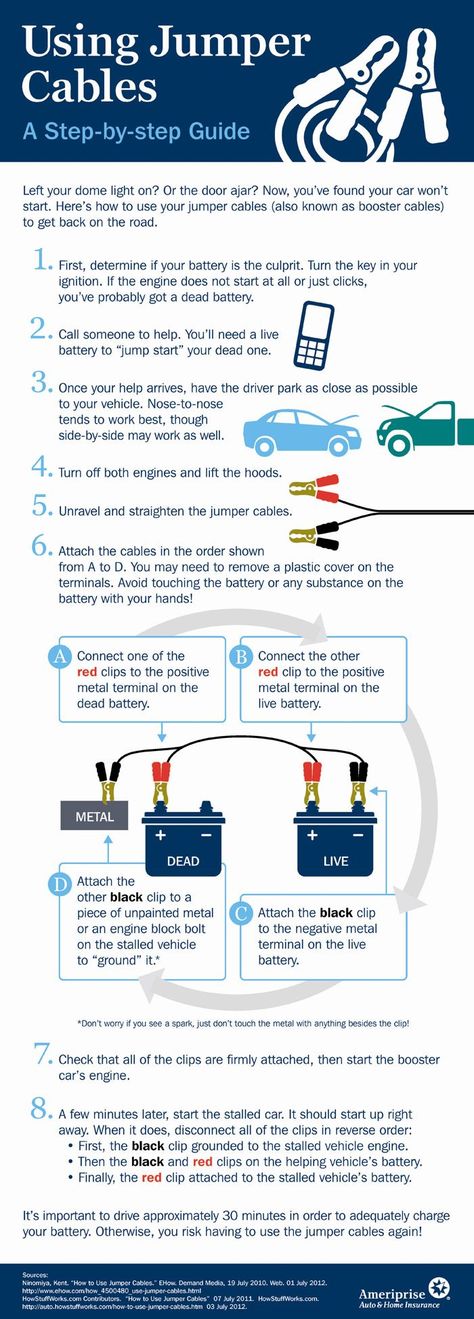 Better if the memory is automatic. In this case, it will be able to determine that the battery is already fully charged and will automatically switch to maintenance mode (self-discharge compensation).
Better if the memory is automatic. In this case, it will be able to determine that the battery is already fully charged and will automatically switch to maintenance mode (self-discharge compensation).
Children's motorcycles (as well as children's cars) typically use 6 volt batteries with capacities of 4.5 Ah, 7 Ah and 12 Ah. Suitable chargers for these batteries are shown in the table:
| Battery voltage and capacity | Battery name and photo (example) | Suitable charger from our range |
| 6 V 4.5 Ah | FIAMM FG 10451 | ROBITON LAC6-600 |
| 6 V 7-9 Ah | DELTA HR 6-7 | Leoch LC-2300 |
| 6 V 12 Ah | LEOCH DJW6-12 | East 220-6-2 |
Please note!
The chargers shown in the example are designed specifically for charging batteries, but are not chargers for a children's motorcycle or car. Almost every manufacturer of children's motorcycles and cars uses a connector that is convenient for him, the manufacturer. Very often they are unique and are not sold on the Russian market. The given chargers have either clamps for fastening to the battery terminals, or a mating part of the battery terminals of this type. They cannot be connected to a children's electric car. Accordingly, the battery for charging will have to be dismantled from the children's motorcycle and the charger connected to its terminals.
Almost every manufacturer of children's motorcycles and cars uses a connector that is convenient for him, the manufacturer. Very often they are unique and are not sold on the Russian market. The given chargers have either clamps for fastening to the battery terminals, or a mating part of the battery terminals of this type. They cannot be connected to a children's electric car. Accordingly, the battery for charging will have to be dismantled from the children's motorcycle and the charger connected to its terminals.
If it is necessary to replace the memory, you can determine the appropriate one from the data indicated on the battery itself: the front panel always indicates the charge voltage for cyclic use and the maximum charge current for that battery. Or you can navigate by this rule: the optimal charge current is 10-20% of the capacity. The maximum is 30%.
The charging time of the battery depends on the amperage of the charger. If it is 10-20% of the battery capacity, subject to the recommended charge voltage, a fully discharged battery should be charged in 10-12 hours.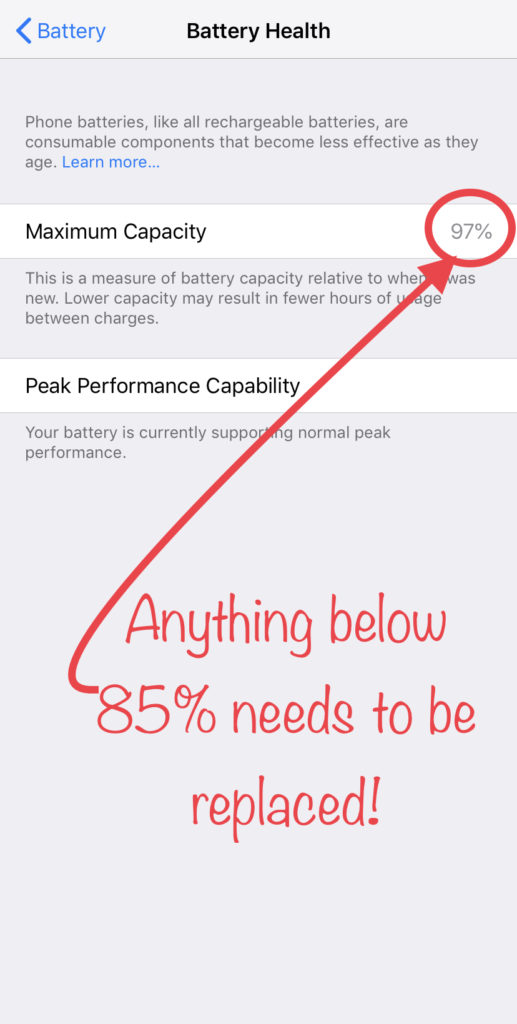 If the current is less, then the charge time increases inversely.
If the current is less, then the charge time increases inversely.
*****
If the given data did not help you decide - call ( 8(495)197-78-47 ), write ( [email protected] ). And we will definitely help you!
Back to questions sectionIf you did not find the answer to your question, ask us
Your name *
Email mail *
Your question *
* Required field
I confirm my legal capacity and consent to the processing of personal data in accordance with the specified text.
The battery on a scooter or bike needs to be recharged periodically. It is not worth bringing the battery to full discharge, because this can lead to extremely negative consequences. Finding a dead motorcycle battery is quite unpleasant, but there are methods that will help you deal with this problem effectively.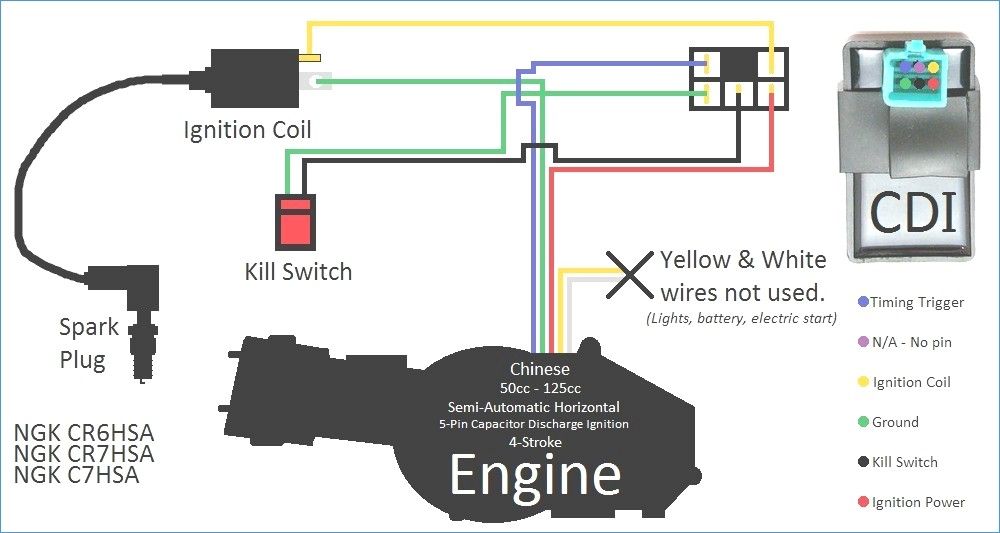
First, let's look at the reasons why a battery can lose power:
Before charging the motorcycle battery, you must measure the voltage in the on-board network with a voltmeter. This is done with the engine running. If you find it's time to charge, don't try it with a car charger. The voltage in it is much higher than required, which can lead to overcharging of the battery.
When choosing a motorcycle charger, we recommend products with a voltage stabilization function.
It is important to remember that batteries of different quality require different charging frequencies. For example, lead-acid batteries - once every one and a half months or a month. Gel ones hold a charge longer, so it is enough to charge once or twice for the entire season.
For example, lead-acid batteries - once every one and a half months or a month. Gel ones hold a charge longer, so it is enough to charge once or twice for the entire season.
Before removing, it is important to write down the connection diagram of the terminals. This will save a lot of time when you put the battery back in place. Next, you need to wait until the battery warms up to room temperature. Charging itself should be carried out away from sources of fire or sparks. When connecting, observe the polarity.
There is a rule that works effectively for lead batteries: the current should be equal to 10% of the battery capacity. The desired value can be set on the corresponding regulator.
Often beginners don't know how much to charge a motorcycle battery. As a rule, this operation should be stopped when the voltage reaches twice the number of cells of the battery, i.e. 10. Visually can be determined by the bubbles that begin to appear on the surface of the electrolyte. After that, the current strength is reduced by half and the battery is recharged for about 2 hours.
After that, the current strength is reduced by half and the battery is recharged for about 2 hours.
There is sometimes debate about how to properly charge a dry-charged motorcycle battery. The standard duration of the procedure is up to 9-10 hours. If the battery is new, then 3-4 hours will suffice.
Gel batteries are also charged at a current of 10% or less of the battery capacity. The main nuance is that the voltage should not exceed the threshold value of 14.4 V (even less on scooters). Even when charging a gel battery, no current reduction is used for recharging.
When preparing to charge, avoid silly mistakes such as incorrectly connected poles. Sometimes the battery is overcharged. In such a situation, use the current strength two times lower than usual - 5% of the battery capacity.
The success of this operation depends on the stage of neglect of the battery. Before you restore the battery for a motorcycle, it is worth reconsidering the feasibility of this operation.